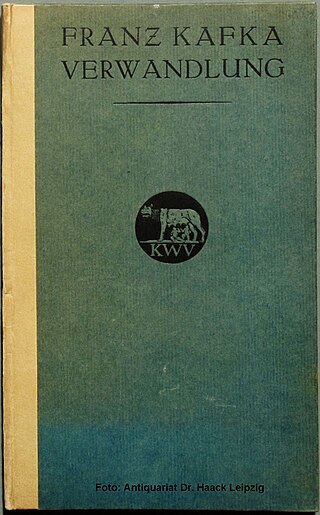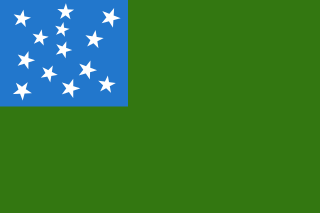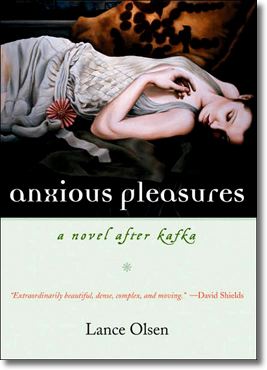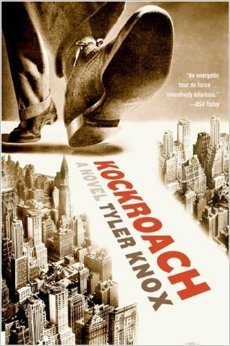Related Research Articles

Franz Kafka was an Austrian-Czech novelist and writer from Prague. He is widely regarded as a major figure of 20th-century literature. His work fuses elements of realism and the fantastic. It typically features isolated protagonists facing bizarre or surrealistic predicaments and incomprehensible socio-bureaucratic powers. It has been interpreted as exploring themes of alienation, existential anxiety, guilt, and absurdity. His best known works include the novella The Metamorphosis and novels The Trial and The Castle. The term Kafkaesque has entered English to describe absurd situations like those depicted in his writing.

The Metamorphosis, also translated as The Transformation, is a novella by Franz Kafka published in 1915. One of Kafka's best-known works, The Metamorphosis tells the story of salesman Gregor Samsa, who wakes one morning to find himself inexplicably transformed into a huge insect and struggles to adjust to this condition. The novella has been widely discussed among literary critics, who have offered varied interpretations. In popular culture and adaptations of the novella, the insect is commonly depicted as a cockroach.

Amerika, (German working title Der Verschollene, "The Missing") also known as The Man Who Disappeared (Amerika), Amerika: The Missing Person and Lost in America, is the incomplete first novel by author Franz Kafka (1883–1924), written between 1911 and 1914 and published posthumously in 1927. The novel originally began as a short story titled "The Stoker". The novel incorporates many details of the experiences of his relatives who had emigrated to the United States. The commonly used title Amerika is from the edition of the text put together by Kafka's close friend, Max Brod, after Kafka's death in 1924. It has been published in several English-language versions, including as Amerika, translated by Edwin and Willa Muir (1938); as The Man Who Disappeared (Amerika), translated by Michael Hofmann (1996); as Amerika: The Missing Person, translated by Mark Harman (2008), as Lost in America, translated by Anthony Northey (2010), and as The Man Who Disappeared (America), translated by Ritchie Robertson (2012).

Madeleine Kunin is a Swiss-born American diplomat, author and politician. She served as the 77th governor of Vermont from 1985 until 1991, as a member of the Democratic Party. She also served as United States Ambassador to Switzerland from 1996 to 1999. She was Vermont's first and, to date, only female governor as well as the first Jewish governor of Vermont. She was also the first Jewish woman to be elected governor of a U.S. state. Since 2003, Kunin has been a James Marsh Professor-at-Large at the University of Vermont.

Peter Schumann is the co-founder and director of the Bread & Puppet Theater. Born in Silesia, he was a sculptor and dancer in Germany before moving to the United States in 1961. In 1963 he founded Bread & Puppet in New York City, and in 1970 moved to the Northeast Kingdom of Vermont, eventually settling in Glover, Vermont, where the company still performs. Schumann's best known work is the Domestic Resurrection Circus, performed annually by the Bread and Puppet Theater until 1998. He was married to theater co-founder Elka Schumann until her death in August 2021.

Insect Dreams: The Half Life of Gregor Samsa is a sequel to Franz Kafka's 1915 short-story The Metamorphosis, written in 2002 by Marc Estrin.

The Second Vermont Republic is a secessionist group within the U.S. state of Vermont which seeks to restore the formerly independent status of the Vermont Republic (1777–91). It describes itself as "a nonviolent citizens' network and think tank opposed to the tyranny of Corporate America and the U.S. government, and committed to the peaceful return of Vermont to its status as an independent republic and more broadly the dissolution of the Union." The organization was founded in 2003 by Thomas Naylor (1936–2012), a former Duke University economics professor and co-author of the 1997 book Downsizing the U.S.A. A 2010 TIME article featured the Second Vermont Republic as one of the "Top 10 Aspiring Nations".
Hilton Addison Wick was an American politician and Vermont Senator.

Stanley Calef Wilson was an American politician, attorney, and businessman from Vermont. He served as the 57th lieutenant governor of Vermont from 1929 to 1931 and the 62nd governor of Vermont from 1931 to 1935.
Thomas Herbert Naylor was an American economist and professor. From Jackson, Mississippi, he was a Professor Emeritus of Economics at Duke University, the author of thirty books, and a founder of the Second Vermont Republic (2003). Naylor authored ten academic books and three books advocating secession.

Adrian Igonibo Barrett is a Nigerian writer of short stories and novels. In 2014, he was named on the Africa39 list of writers aged under 40 with potential and talent to define future trends in African literature. Following his two collections of short stories – From Caves of Rotten Teeth (2005) and Love Is Power, or Something Like That (2013) – his first novel, Blackass, was published in 2015, described by the Chicago Review of Books as "Kafka with a wink".

Franz Kafka, a German-language writer of novels and short stories who is regarded by critics as one of the most influential authors of the 20th century, was trained as a lawyer and later employed by an insurance company, writing only in his spare time.
Because of their long, persistent association with humans, cockroaches are frequently referred to in art, literature, folk tales and theater and film. In Western culture, cockroaches are often depicted as vile and dirty pests. Their size, long antennae, shiny appearance and spiny legs make them disgusting to many humans, sometimes even to the point of phobic responses.

Wolfgang Mieder is a retired professor of German and folklore who taught for 50 years at the University of Vermont, in Burlington, Vermont, USA. He is a graduate of Olivet College (BA), the University of Michigan (MA), and Michigan State University (PhD). He has been a guest speaker at the University of Freiburg in Germany, the country where he was born.

Anxious Pleasures: A Novel After Kafka is a postmodern novel by Lance Olsen, published in 2007 by Shoemaker & Hoard. It is a work of metafiction.

Kockroach is a 2007 novel by William Lashner, written under the name "Tyler Knox". It was published by William Morrow and Company/HarperCollins. In 2008, an Italian translation, Lo strano caso dello scarafaggio che diventò uomo, was published by Newton Compton Editori, and a Portuguese translation, Kockroach: A Metamorfose, was published by Paralelo 40°.
Andrew Cranston is a Scottish painter. His work has been reviewed and discussed in various publications such as The Guardian and The Spectator.
The Metamorphosis is a novella by Franz Kafka published in 1915. One of Kafka's best-known works, The Metamorphosis tells the story of salesman Gregor Samsa, who wakes one morning to find himself inexplicably transformed into a huge insect and struggles to adjust to his new condition. The novella has been recreated, referenced, or parodied in various popular culture media.

The Metamorphosis of Mr. Samsa is a 1977 Canadian short animated fantasy film by Caroline Leaf, adapted from Franz Kafka's The Metamorphosis, told through the animation of beach sand on a piece of glass. The film features music by Normand Roger and sound by Michel Descombes. The film earned ten awards from the year of its release in 1977 through to 1981 as it was screened at various film festivals around the world.
References
- 1 2 Ken Tucker (2002-03-24). "Save the Roach - New York Times". The New York Times . Retrieved 2012-08-01.
- ↑ "Insect Dreams - Marc Estrin". Complete-review.com. Retrieved 2012-08-01.
- ↑ "It's a bug's life". Washington Post. The Prague Post. Archived from the original on November 17, 2018. Retrieved 2012-08-01.
- ↑ "THE TOP 100 BOOKS OF THE YEAR". SFGate. 2002-12-15. Retrieved 2012-08-01.
- ↑ Mahoney, Dennis and Wolfgang Mieder. 2016. "Gregor had yet to discover that life was truly stronger than fiction": Proverbial messages in Marc Estrin's Kafkaesque novel Insect Dreams. The Half Life of Gregor Samsa. Proverbium 33:281-318.
- ↑ "Mayer Collection of Fat Liberation". Lib.uconn.edu. Archived from the original on 2007-08-07. Retrieved 2012-08-01.
- ↑ Rehearsing with Gods by Ronald T. Simon, Marc Estrin : Associated Articles. Chelsea Green. Retrieved 2012-08-01.
- ↑ Laurel Maury (2007-11-21). "Review: Grim setting for wacky 'Lamentations of Julius Marantz'". SFGate. Retrieved 2012-08-01.
- ↑ Schone, Mark (June 26, 2005). "Fiction Chronicle". New York Times. Retrieved 2012-08-01.